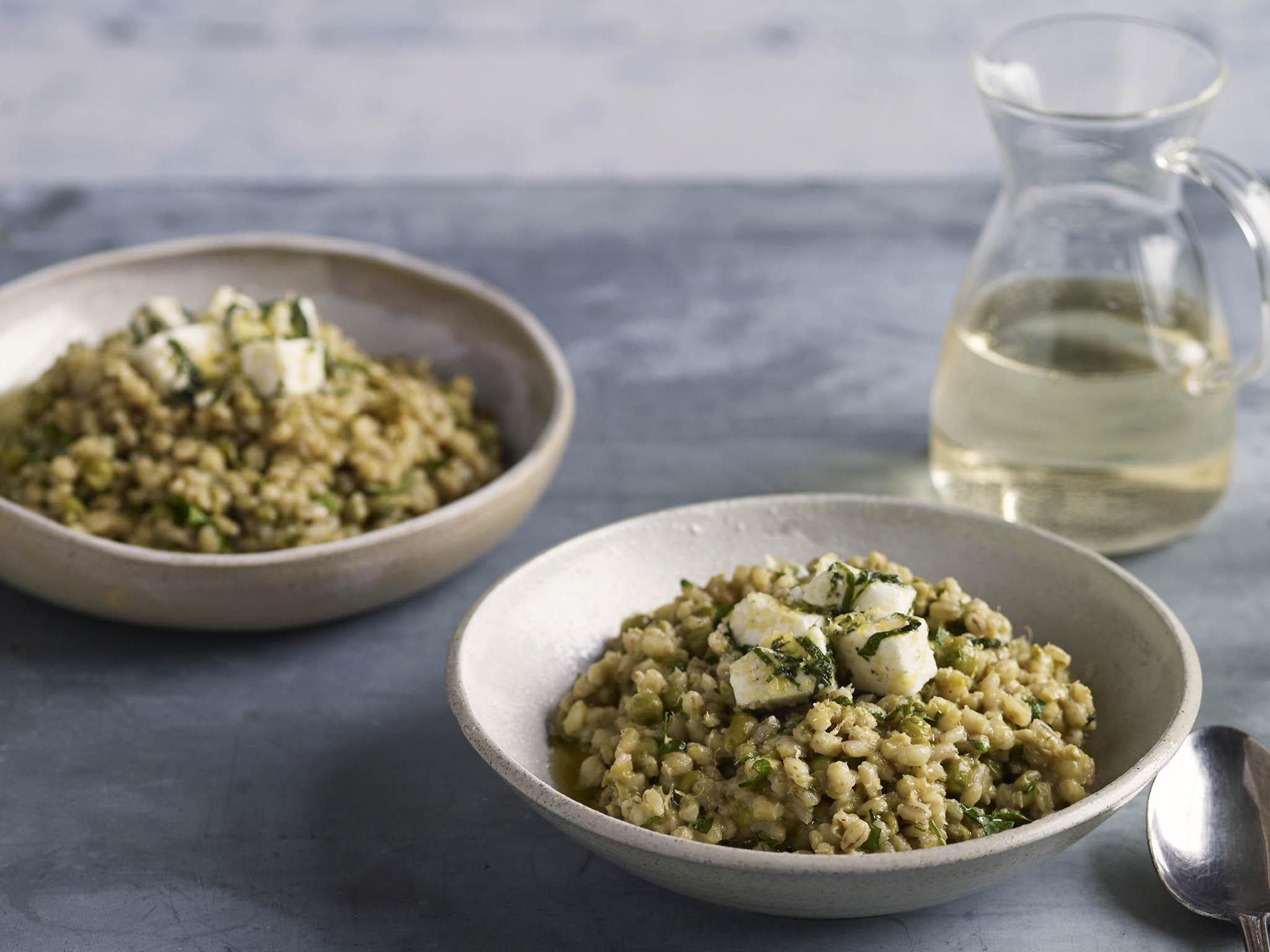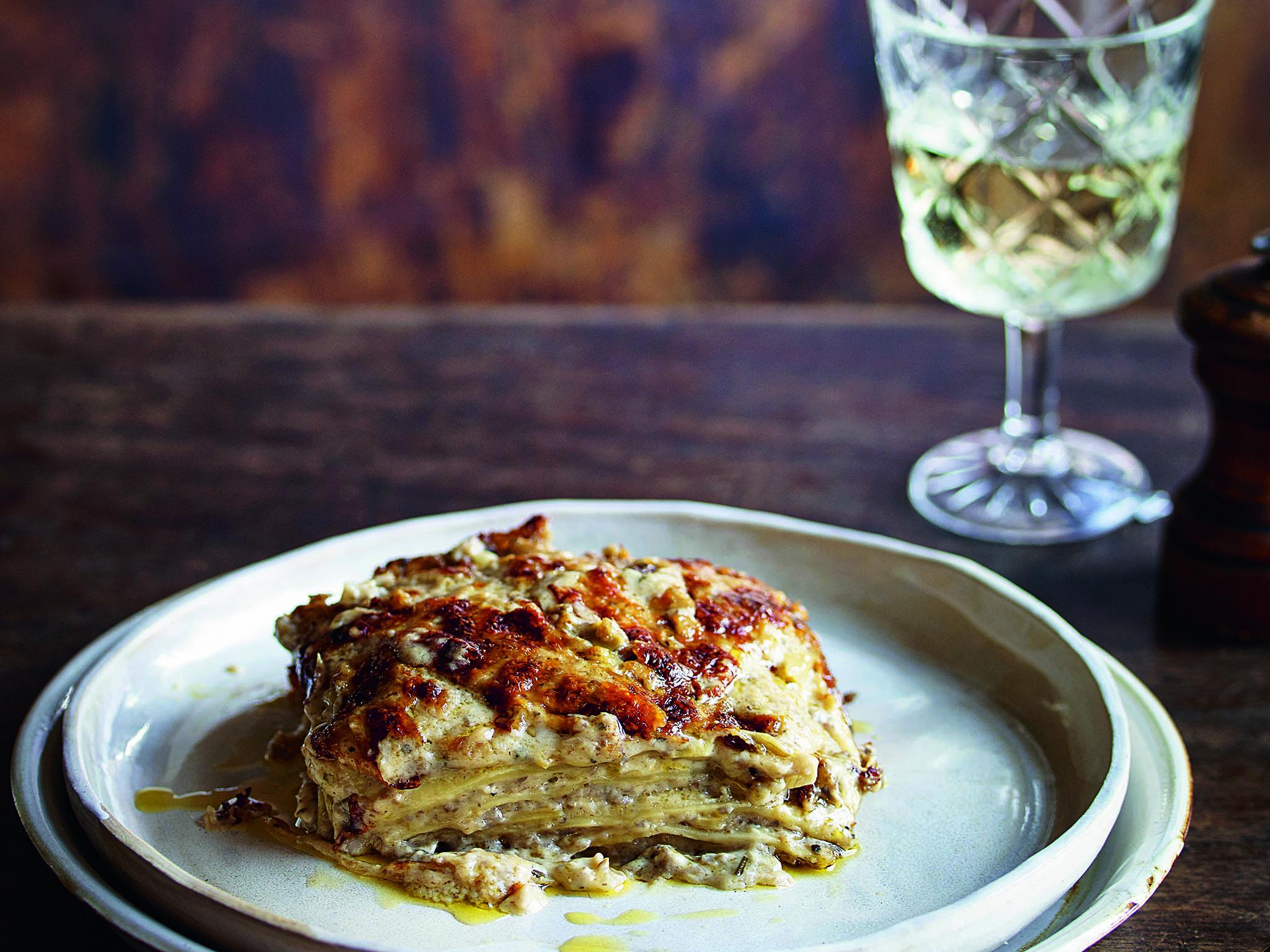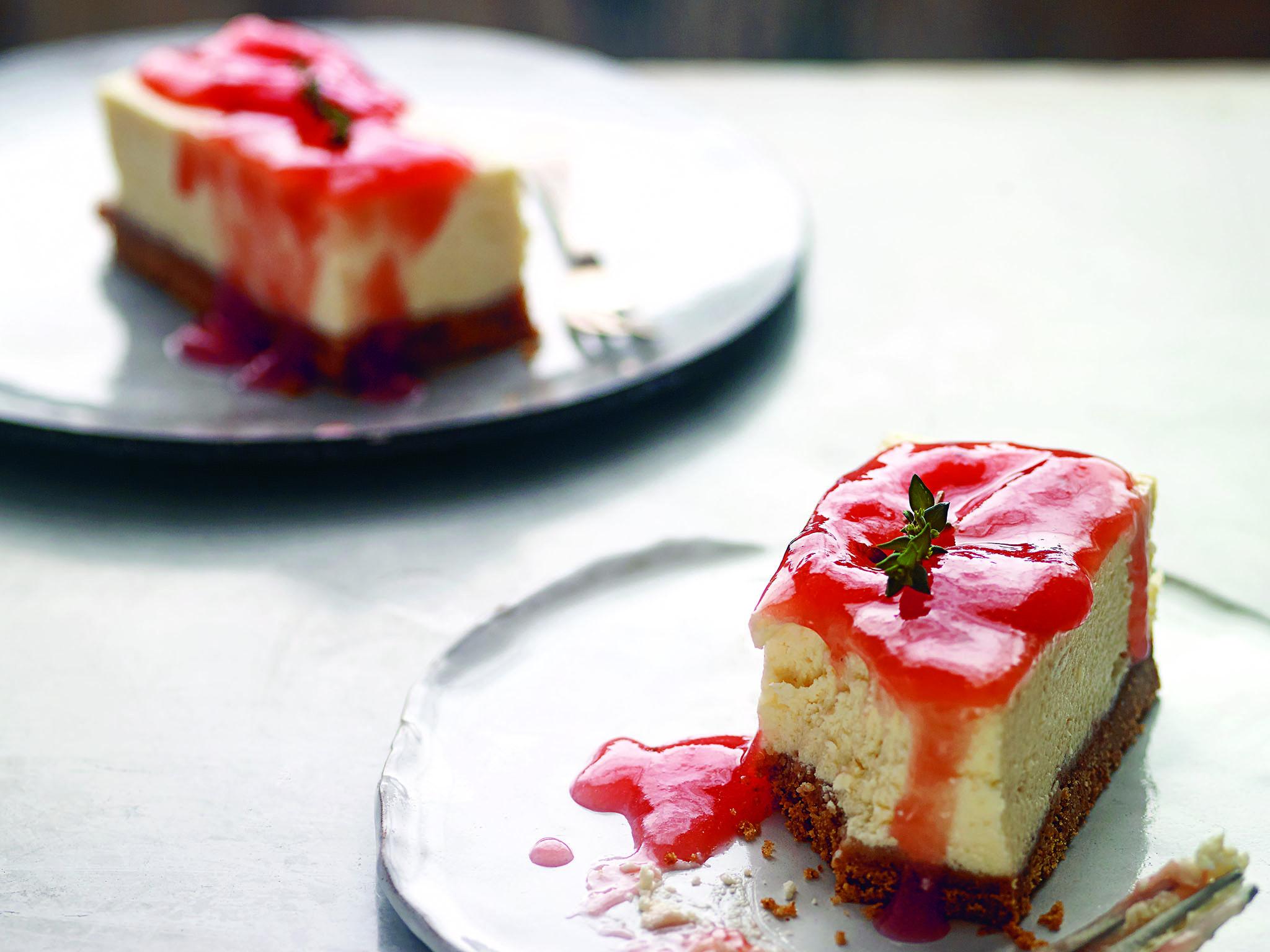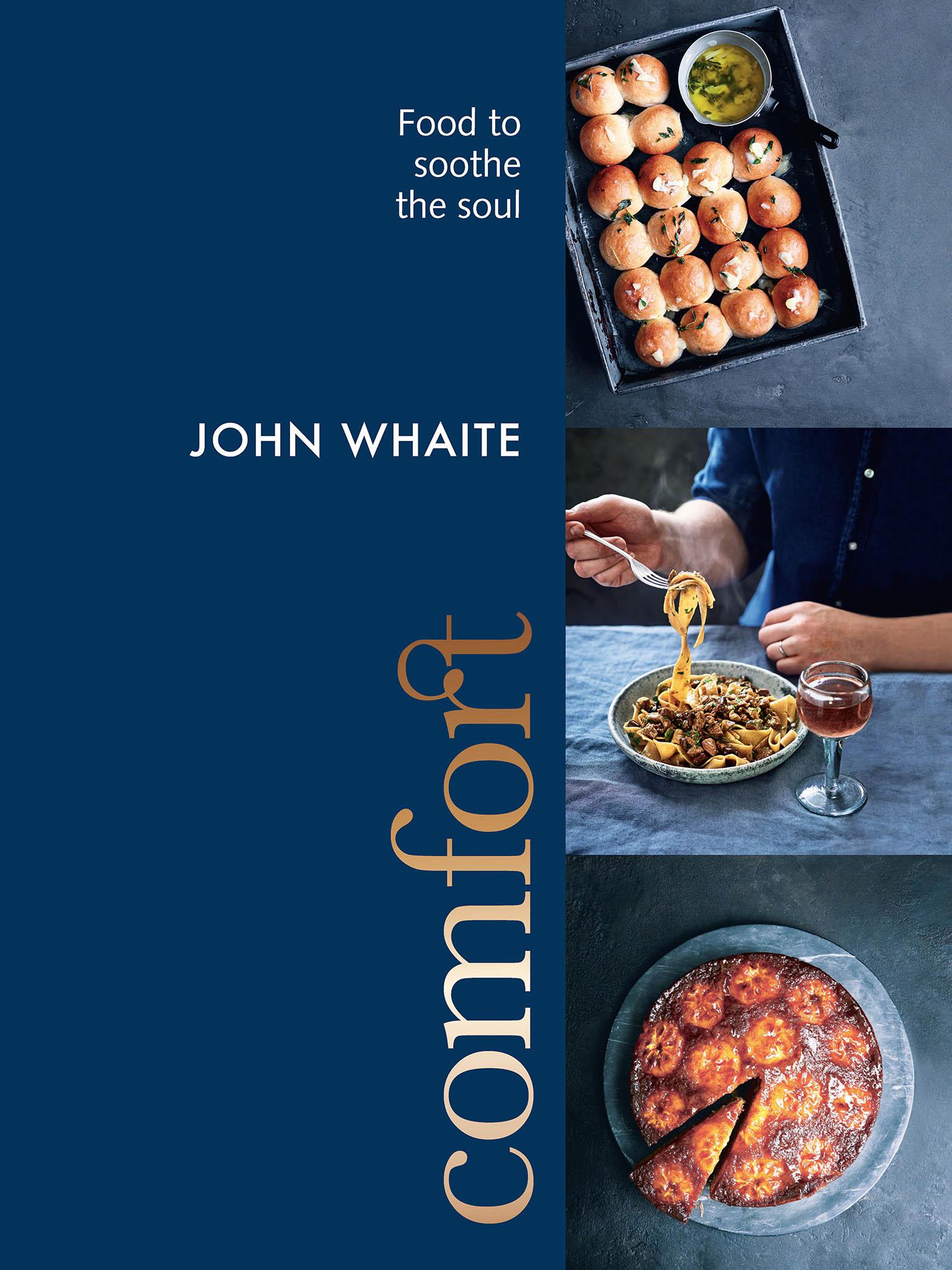Food to soothe the soul from John Whaite's 'Comfort' cookbook
From hearty risotto to indulgent cheesecake, the Great British Bake Off winner celebrates the simple pleasure of cooking and eating nourishing food at home

Your support helps us to tell the story
From reproductive rights to climate change to Big Tech, The Independent is on the ground when the story is developing. Whether it's investigating the financials of Elon Musk's pro-Trump PAC or producing our latest documentary, 'The A Word', which shines a light on the American women fighting for reproductive rights, we know how important it is to parse out the facts from the messaging.
At such a critical moment in US history, we need reporters on the ground. Your donation allows us to keep sending journalists to speak to both sides of the story.
The Independent is trusted by Americans across the entire political spectrum. And unlike many other quality news outlets, we choose not to lock Americans out of our reporting and analysis with paywalls. We believe quality journalism should be available to everyone, paid for by those who can afford it.
Your support makes all the difference.Lemon and pea pearl barley risotto with twice-marinated feta
The most comforting thing about a risotto is the combination of satisfying smoothness and the texture of the grains. With pearl barley, that is amplified: a bigger grain means a bigger bite with every mouthful. You may think it odd to soak the feta in milk, but it’s a wonderful thing. The milk draws out that startling saltiness, which means you can taste the complex creaminess of the feta. But that salt isn’t wasted; the milk is added to the risotto at the end, boosting both flavour and feel.
Serves 4
1 litre good quality chicken or vegetable stock
300g frozen peas
Zest and juice of 1 unwaxed lemon (use a potato peeler to remove 3 strips of zest, scraping off any white pith with a knife, and reserve the rest for the feta)
3 garlic cloves, minced
Olive oil
6 spring onions, finely chopped
400g pearl barley, rinsed
Small handful of flat-leaf parsley, roughly chopped
Sea salt flakes and coarsely ground black pepper
For the marinated feta
200g feta
200ml milk
Remaining zest from the lemon
10 mint leaves, very finely chopped
50ml extra virgin olive oil
Put the stock, half the peas, the 3 strips of lemon zest and the crushed garlic into a pan and bring to the boil. Simmer for 5 minutes, then set aside to cool. Once the mixture has cooled, blitz in a blender to a smooth liquid.
Heat a generous glug of olive oil in a large, shallow casserole dish over a medium-high heat and, once it is hot, add the spring onions with a pinch of salt. Fry, stirring occasionally, for 3-4 minutes, then add the pearl barley, the stock mixture, the lemon juice and the reserved peas. Bring to the boil, reduce to a simmer and cook for 40-45 minutes, stirring frequently. If the risotto starts to look dry, add a little water. Meanwhile, chop the feta into small chunks and add to a bowl along with the milk. Leave to sit for 15 minutes, then drain (reserve the milk). Put the feta into a bowl with the remaining lemon zest, mint and extra virgin olive oil with a pinch of pepper. Leave to marinate while the risotto cooks. Once the pearl barley is tender, it’s ready. Add the reserved milk to the risotto, stirring until completely combined. Turn off the heat, test for seasoning and stir through the parsley. Serve, topped with the feta.

Artichoke and mushroom lasagne
When I was last in New York, I was lucky enough to get a table at I Sodi, a small Italian restaurant in the West Village serving awesome cocktails and rustic Tuscan fare. There I had the most delicious vegetarian lasagne I have ever tasted (I exaggerate not). Layer upon layer of al dente pasta with an oozing cheese and artichoke sauce, spiked gently with fresh nutmeg. I couldn’t pluck up the courage to ask for the recipe, so I’ve tried to work it out for myself, and this isn’t too far off. Nutmeg is such a haunting spice; it’s a ghostly reminder of the white sauces and rice puddings from my childhood. I can’t recommend enough that you use fresh nutmeg and finely grate it yourself; the ready-ground nutmeg seems to have such a mouth-numbing, almost ferric, flavour. Fresh is best.
Serves 6-8
3 tbsp olive oil
1 small onion, finely chopped
500g chestnut mushrooms, very finely chopped (I use a food processor)
500g fresh
Lasagne sheets
For the sauce
125g unsalted butter, plus extra for greasing
125g plain flour
1 litre milk
500ml vegetable stock
200g (drained weight) artichoke hearts from a jar, finely chopped
1½ tsp finely chopped fresh rosemary
1½ tsp freshly grated nutmeg
1 tsp fine sea salt
1 tsp freshly ground black pepper
350g Gruyere, plus a little extra for the top, finely grated
2 tbsp vodka (or white wine)
Heat a large frying pan over a high heat and add the olive oil. Once the oil is hot add the onions and mushrooms with a pinch of salt and pepper, and fry, stirring very frequently, for a good 5 minutes, until softened and fairly dry – the aim here is to try to remove as much moisture as possible from the onions and mushrooms, and cooking them at a high heat will do that quickly, if they are stirred (otherwise they’ll burn). Remove from the heat.
For the sauce, put the butter into a medium-large saucepan over a medium-high heat and allow it to melt, stirring occasionally. As soon as the butter has melted, add the flour and beat vigorously with a wooden spoon until everything comes together into a very thick paste. Allow this paste to cook for a minute just until it turns a touch darker, then slowly add the milk, beating frequently after each drop. The mixture will seem to get even thicker at first, but this is normal – don’t panic.
As the milk is absorbed, you can start to add the stock in the same way. By this point, I find it useful to switch to a whisk to ensure the sauce is very well mixed. Allow the sauce to bubble for a minute or two. Add the chopped artichokes, rosemary, nutmeg, salt, pepper, cheese and vodka.
Reduce the heat to low and stir for 3-4 minutes. The sauce should be as thick as double cream and as smooth as possible. Remove from the heat and set aside until needed.
Stir the cooked mushrooms and onion into the sauce.
Preheat the oven to 200°C/180°C fan/gas mark 6. Grease a 20cm square cake tin (not loose-bottomed) with butter, then line the base with lasagne sheets, trimming them to size if necessary.
Pour over just enough of the sauce to cover the pasta, then repeat the layers until all the sauce and the pasta are used, but do make sure that the last layer is sauce and not pasta. Sprinkle over a little extra Gruyere and bake for 50-60 minutes, or until the sauce is bubbling and the top is very deeply bronzed, perhaps crispy. Remove from the oven and allow to rest for 10 minutes before serving.

Goat’s cheese, rhubarb and thyme cheesecake
You might take one look at this title, purse your lips, then slam my book shut, but just wait (if you’ve made it this far, you know your subconscious is intrigued). This is superb – perhaps the best cheesecake I’ve ever made, or indeed, eaten. The goat’s cheese is added to help tart the cheesecake up, in both title and flavour; it doesn’t taste exclusively of that, but it has a certain sour quality that isn’t achievable with just cream cheese. Thyme is such an adaptable herb, anyway, that it just echoes through this dessert without overpowering anything. If rhubarb is unavailable, just stew down some sharp blackberries or gooseberries with a little sugar.
Serves 8-10
For the base
250g digestive biscuits
50g Ryvita
80g unsalted butter
For the filling
300g soft goat’s cheese (I like Rosary)
600g full-fat cream cheese
100ml buttermilk
1 tbsp cornflour
150g caster sugar
3 large eggs
For the topping
200g rhubarb, roughly chopped
175g caster sugar
4 thyme sprigs
Preheat the oven to 200°C/180°C fan/gas mark 6. Grease a 20cm square cake tin and line the base with baking paper.
For the base, put the biscuits and Ryvita into a food processor and pulse to a fine crumb. Add the butter and blend until you have a damp sandy consistency. Tip the mixture into the cake tin and compress to the bottom with your hands or the back of a spoon, then bake for 15 minutes to set. Remove the tin from the oven and allow to cool, though do leave the oven on.
For the filling, whisk the goat’s cheese, cream cheese and buttermilk with the cornflour, until well combined – I do this in my KitchenAid with the whisk attachment fitted, but an electric hand-held beater would work fine. Add the sugar and whisk just until incorporated, then beat in the eggs until you have a smooth, fairly runny batter. Pour the cheesecake batter on top of the base and put it into the oven. Immediately reduce the heat of the oven to 140°C/120°C fan/gas mark 1. Bake for 1 hour – 1 hour 10 minutes, until the cheesecake is set but has quite an impressive wobble to it when gently shaken.

Allow the cheesecake to cool to room temperature and then refrigerate overnight (I know it’s quite a wait, but it needs that length of time to set; though a few hours would be okay if you’re really in urgent need of cheesecake).
For the topping, put the rhubarb and sugar into a saucepan over a medium-high heat with a splash of water and the thyme. Bring to the boil and cook until the rhubarb has given up entirely and you have a very loose jam. Pluck the thyme stalks out while you can, then leave to cool to room temperature. To serve, either pour the rhubarb mixture over the entire cheesecake and reveal in full grandeur, or serve slices with a little of the rhubarb mixture blobbed on top.
Comfort, by John Whaite (Kyle Books, £15.18)
Join our commenting forum
Join thought-provoking conversations, follow other Independent readers and see their replies
Comments